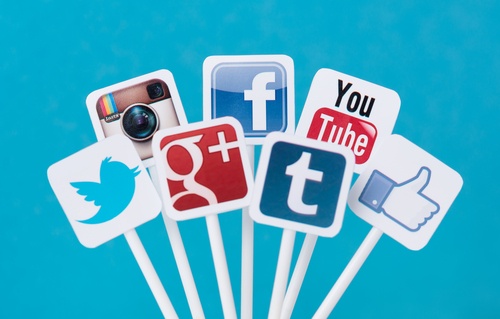- Piattaforma
- Clienti
- Partners
- Risorse


They say time flies when you’re having fun. Can you believe it’s already been 30 years since the first .com domain went online on March 15, 1985, registered by computer company Symbolics?
Thirty years!
Since then, the speed and extent of innovation and disruption brought to the marketing segment by digital technologies has been nothing short of staggering. Even looking back only five years, when the first Apple iPad and Instagram hit, can seem like a different era.
And that’s good, because marketers have never been more empowered to drive personalized customer dialogues and long-term loyalty with relevant, individualized content than today.
High time to say thanks! Let’s take a moment to celebrate the 5 biggest milestone events that shaped our industry:
1. The rise of the World Wide Web (1991)


As marketers soon realized, the Web also provides access to a large universe of customers, and the first Web banner ad sold as early as 1993.
Since then, it’s been all about engaging the customers – and getting clicks and eyeballs in all the right places. Today, building a new website to start a marketing campaign is still the first order of business for 48% of marketers (MarketingSherpa), while almost half of today’s customers judge the credibility of a company and product by looking at the website (NewsCred).
Why it matters: The World Wide Web provided the underlying infrastructure that took brand communications to a whole new level, changing the game from “push” to “pull” marketing, from preaching to storytelling, and from loose engagement metrics to cold, hard stats.
2. Email becomes mass communication tool (1994)


Early email mostly served as a hub for academic networking (“I’m starting this company in my garage, could be huge!” – Steve). But the water-cooler vibe was short-lived and the first wave of SPAM hit the inboxes of some 400 ARPANET users as early as 1978.
Starting in 1994, commercial providers such as Yahoo!, Hotmail, AOL etc. took electronic mail into mainstream territory. Today, an estimated 122,500,453,020 emails are sent every hour (MarketingProfs). Ding! Ding! Ding! And while new channels are emerging all the time, McKinsey & Company found email nearly 40 times more effective at acquiring new customers than Facebook and Twitter.
Why it matters: By unlocking one-to-one personalized mail in real-time at a low cost, email has made the world a smaller place – and a much bigger playing field for marketers. Just make sure to use responsive email design!
3. The E-Commerce revolution (1994)


Today, the only thing broken in e-commerce are sales records: Consumer purchases on the Internet reached $1.471 trillion in 2014 (eMarketer) and with an annual growth rate of 20% will reach $2.356 trillion in 2018.
With all types of products just a click away, companies like Seattle-based powerhouse Amazon, incorporated in 1994 by Jeff Bezos under the name Cadabra, are already offering 2-hour deliveries to customers in select area codes. And as more and more customers shop on mobile devices – 24.4% of overall ecommerce revenues by 2017 (ABI Research) – shipping is getting more nimble. Next up: Delivery by drones!
Why it matters: Every marketer knows that the beauty of e-commerce is only partly about shopping. Customers also fork over all kinds of actionable data – where they shop, what they buy – entirely for free.
4. Google’s creation of the SEO market (1998)


Today, Google’s search engine handles almost six billion searches per day – and the most successful companies are taking no chances when it comes to ranking first on the search list.
In a business-to-business context, 57% of marketers named Search Engine Optimization (SEO) as the biggest factor for lead generation. And Google is king: It controls a whooping 67.6% of the U.S. search engine market, where users conduct 12 billion searches per month. Even competitors such as Amazon are currently spending an estimated $157.7 million in the U.S. for Google search ads.
Why it matters: As a seasoned marketing expert puts it, “If you want traffic as a digital marketer, you go through Google.”
5. The social media takeover (2002)


Fast forward to 2015 and Facebook counts 1.366 billion users worldwide. Mobile-friendly social messaging platforms such as Twitter and Instagram keep 288 million and 300 million users per month, respectively, thumbing away on their smartphones.
The social media revolution fundamentally changed the way brands speak to their customers – for better (#viralvideogold) or worse (#marketingfail). Today, more than 84% of all B2B marketers report using social media in their campaigns (Aberdeen). And the best in our industry rely on integrated solutions such as Selligent Social to keep the conversation moving and customers engaged across all channels and devices.
Why it matters: The rise of social media completes the cycle where customer data, not clicks per banner ad, are the new “oil” driving the digital economy.
Agree with the choices for digital marketing milestones? Tweet your thoughts to @Selligent
Photo Credits: Source – Shutterstock
Marigold: where relationships take root.